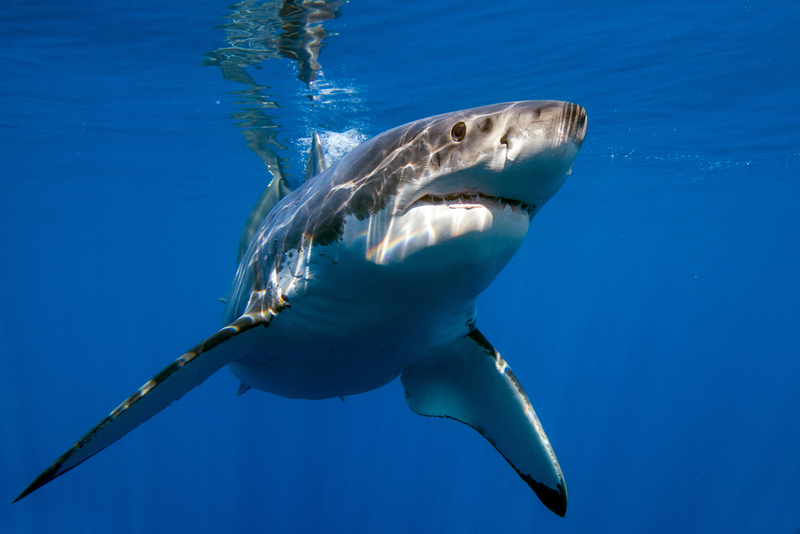
When a bath or sink drains, small whirlpools form. Tides frequently cause whirlpools in narrow ocean straits with fast-flowing water. These are known to suck in humans who come in their way and even ships (although less common)—so what about the animals in the ocean?
White sharks spend a surprising amount of time in warm oceanic eddies, according to research. When the animals migrate to the open ocean, the researchers discovered that they spend the majority of their days swimming in anticyclonic eddies a.k.a warm circular currents.

More than three-quarters of the time, the animals were found within these whirlpool-like gyres. White sharks are effectively warm-blooded and must maintain a constant body temperature. One reason sharks may prefer them is that they can spend more time in deeper water by diving in these warm eddies.
Whirlpools aren’t as destructive as they are depicted in fiction, such as in the Pirates of the Caribbean’s whirlpool battle. Unlucky seafarers have been killed by powerful whirlpools, but laypeople tend to exaggerate their power. Mansa Musa, the ruler of the Mali Empire in the fourteenth century, wrote one of the few accounts of large ships being sucked into a whirlpool. Temporary whirlpools caused by major engineering disasters, such as the Lake Peigneur disaster, have been known to submerge medium-sized watercraft like barges and boats. When entering a whirlpool, avoid moving in the same direction as the water flow and instead aim for the outer edge instead of the center. If you’re in a boat or kayak, try to keep it from filling up with water. The whirlpool can sometimes throw you back out.